The popular Aircraft Configuration Design Short Course that covers it all!
Now scheduled for 7-11 April, 2025, in Bluffton SC. Click for price and registration.
Learn to design them, then stay one more day to watch them fly at the nearby Marine Corps Air Station Beaufort Airshow!
See the Blue Angels, F-35B, F-16 Viper Demo Team, Warbirds, and more (admission is free but you must get tickets in advance)
A broad and intensive course for everybody involved in new or modified Aircraft Design. This class starts from fundamentals and takes you all the way through the design process including:
- Developing a design in response to requirements
- Laying out the design on a drafting table or CAD screen
- Analyzing it for aerodynamics, propulsion, structure, weights, stability, cost, and performance
- Calculation of range or sizing to a specified mission
- Trade Studies, carpet plots, and multivariable/multidisciplinary optimization, and……
- Learning from your work to make the next design version better!
Prior participants have said…
“Your class was amazing!” Michael Strass, Design Engineer, Sikorsky Aircraft (UTC)
“Well qualified, extraordinary presenter..invaluable to me as a propulsion company representative.” W. Taylor, Pratt & Whitney
“This course needs to get to everyone..that teaches aircraft design.” J. Marchman, Virginia Polytechnic Institute
“In-depth and detailed insight into aircraft conceptual design – I enjoyed the course very much.” F. Ng, DSO National Lab – Singapore
“Excellent Aircraft Design Short Course!” F. de Magalhaes Porto, Embraer
“Extremely interesting and informative to be exposed to aircraft design from a total system viewpoint.” Dr. Lou Povinelli, NASA-Glenn
“Provides a very good knowledge from the practical real-world point of view – a very good course.” Dr. S. Gangadharan, Embry-Riddle University
“Enjoyed the class from start to finish! I recommend this class to all aerospace design personnel.” D. Smith, 419th Flight Test Squadron (USAF)
“I was able to expand my knowledge and learn a great deal. The subject matter is incredibly fascinating, and I had a truly great time. The knowledge I gained can be directly applied both in my professional life and my personal hobbies. It also helps me with my career orientation.” Bernd Sirius Claushen – Airbus Defence and Spacer (click here to see his review on LinkedIn)
“I don’t have any background in aircraft design. After your class, I have a much better idea of the real world of flying machines.” Dr. Chungsheng Yao, NASA Langley Research Center
“Excellent. Very stimulating.” B. Dillner, Boeing
NEXT PUBLIC OFFERINGS:
Now scheduled for 7-11 April, 2025, in Bluffton SC. Click for price and registration.
IN-HOUSE OFFERINGS:
Contact Aircraft Design Research LLC for price and schedule availability.
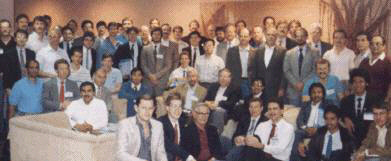
This popular five-day aircraft design short course has been attended by over 5,000 people to date, and has been presented at Lockheed, Boeing, NASA-Langley, Rockwell, British Aerospace, Boom Technology Inc., the Swedish Royal Institute of Technology (KTH), Anduril Industries, SAAB Aircraft, Linkoping University (Sweden), NAVAIR, the Naval Research Lab., Samsung Aerospace, and the Chilean Aeronautical Academy (APA), as well as numerous public presentations through AIAA. Aimed at the working engineer in an industry or government aircraft design department, the course is also highly useful for those teaching aircraft design and offers a broad overview of the entire subject of Aircraft Conceptual Design in an integrated, cohesive, and enjoyable set of lectures. All required theoretical methods are covered in the course, but the biggest strength of the course is that it provides a “real-world” insight into the actual practice of aircraft design. Numerous interesting and informative examples are given – including design failures!
The course covers both the analytical and design layout skills required for the initial design of new aircraft concepts and emphasizes practical aircraft design including configuration layout development and design “rules-of-thumb” as well as the analytical tasks of design such as aerodynamic analysis and vehicle sizing. Special topics of interest include stealth design, VSTOL and helicopter design, design optimization and carpet plotting, and use of computers and CAD in conceptual design.
The course consists of twenty 90-minute lectures as outlined below, covering material from Dr. Raymer’s textbook plus several additional topics. Course material includes a copy of all lecture charts and a copy of Dr. Raymer’s best-selling textbook, “Aircraft Design: A Conceptual Approach.”
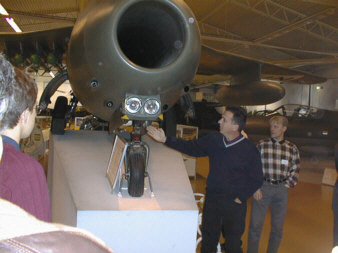
DAY ONE

LECTURE 1: INTRODUCTION: Overview of the design process, requirements definition, end products of design.
LECTURE 2: QUICK DESIGN & SIZING TECHNIQUES: Methods to quickly determine aircraft weight and size required to meet mission requirements, rapid aero/weights/propulsion methods, design trade studies.
LECTURE 3: WING/TAIL GEOMETRY SELECTION: Selection of wing geometry and tail arrangement.
LECTURE 4: THRUST-TO-WEIGHT AND WING LOADING, INITIAL SIZING: Initial selection of wing loading and thrust-to-weight (or horsepower-to-weight) ratio to satisfy requirements such as stall speed, climb rate, and maneuverability. Refined estimation of aircraft takeoff weight and fuel weight to attain the design mission, and determination of the required fuselage, wing, and tail sizes.
DAY TWO
LECTURE 5: CONFIGURATION LAYOUT AND LOFT: Design layout of a credible aircraft configuration arrangement including external geometry, conic lofting, flat-wrap development, smoothness verification, cross-section definition, and internal layout. Design layout of wings and tails including airfoil interpolation, trapezoidal and non-trapezoidal geometries, wing location guidelines.
LECTURE 6: AERO & STRUCTURES CONSIDERATIONS: Design guidance and rules-of-thumb for creation of configuration layouts with good aerodynamics and structural arrangement.
LECTURE 7: SPECIAL CONSIDERATIONS: Design impacts of observability (radar, IR, visual, and aural), vulnerability, producibility, and maintainability.
LECTURE 8: SYSTEMS INTEGRATION: Design integration of landing gear, hydraulics, electrics, pneumatics, and avionics.
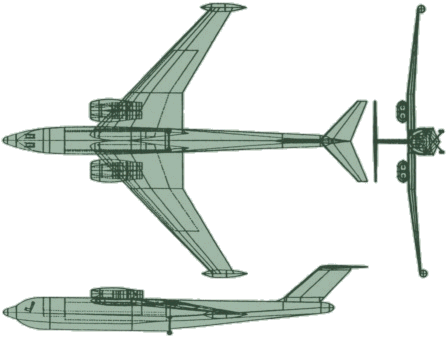
DAY THREE
LECTURE 9: PAYLOAD, PASSENGERS, & CREW: Design layout of the crew station, passenger compartment, cargo bays, and weapons integration.
LECTURE 10: PROPULSION INTEGRATION: Jet engine integration including engine selection, engine scaling, engine location considerations, inlet geometry and location, and nozzle geometry. Propeller engine integration including engine selection and location considerations, cowling geometry, and propeller sizing. Aircraft fuel system considerations.
LECTURE 11: AERODYNAMIC ANALYSIS: Methods for estimating the aerodynamic lift and drag from low subsonic through supersonic speeds. Methods discussed include the equivalent skin friction method, the component drag build up method, Oswald’s efficiency factor, the leading edge suction method, and the Sears-Haack wave drag method. Introduction to Computational Fluid Dynamics (CFD).
LECTURE 12: STABILITY AND CONTROL ANALYSIS: Methods for determining if the design satisfies essential stability and control requirements including trim, nosewheel liftoff, static stability, departure susceptibility, and spin recovery
DAY FOUR
LECTURE 13: PROPULSION ANALYSIS: Methods for calculation of the installed net propulsive force for jet or propeller-driven aircraft, including installation corrections, inlet drag, nozzle drag, and propeller thrust calculation.
LECTURE 14: LOADS, STRUCTURES AND WEIGHTS: Aircraft loads, aerospace materials and properties. Introduction to the Finite Element Method (FEM). Estimation of aircraft weights and mass moments using statistical models and corrections for advanced materials.
LECTURE 15: PERFORMANCE ANALYSIS: Performance analysis methods for level flight, climb, glide, takeoff, landing, and maneuver. Energy maneuverability methods for combat analysis and minimum time/fuel to climb. Fighter measures of merit including agility and post-stall maneuver.
LECTURE 16: TRADE STUDIES AND COST ANALYSIS: Refined sizing techniques and discussion of industry methods. Sizing matrix and carpet plot optimization techniques. Use of performance constraint curves to determine the optimal aircraft. Life Cycle Cost analysis using statistical and operational data. Airline economic analysis.
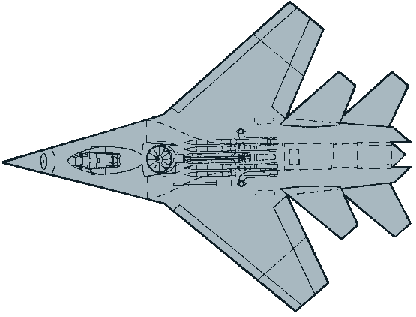
DAY FIVE
LECTURE 17: COMPUTER-AIDED CONCEPTUAL DESIGN: Use of CAD in the conceptual design environment. Overview of computer graphics methods and mathematics for aircraft design. Demonstration of conceptual design CAD and integrated analysis and optimization (RDS-Professional).
LECTURE 18: VTOL, HELICOPTER, AND DERIVATIVE AIRCRAFT DESIGN: Overview of jet VSTOL design and analysis including concepts and integration issues. Helicopter aerodynamics, performance, controls, design, and sizing techniques. Design considerations for development of derivatives of existing aircraft, including performance, weight, and cost estimation.
LECTURE 19: INNOVATIVE DESIGN CONCEPTS: Overview of innovative design concepts including Canard, Flying Wing, Joined-Wing, Blended Wing Body, UAV, Asymmetric, Hypersonic, etc.
LECTURE 20: DESIGN EXAMPLES: Review of prior lessons by a step-by-step design examples from initial requirements and first sketch to completed configuration layout and optimization carpet plot, including a Homebuilt Aerobatic Aircraft and a Lightweight Supercruise Fighter
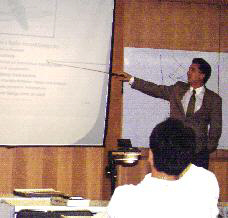
This class can optionally be taught as a two-week intensive in-house course with substantial student participation including seminar discussions and an in-class project in aircraft conceptual design.
In-house presentation for Samsung Aerospace
For further information or to request an in-house class quote, contact Aircraft Design Research LLC
Site Content is Copyright © 2025 by D.Raymer, ALL RIGHTS RESERVED.
Copyright includes the Course Outline above, which may NOT be used by others for preparing a class or a request for bids to teach such a class.